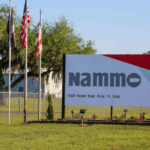
NATIONAL HARBOR, Md.--As the F-35 program aims to deliver a "fully combat capable" fighter next year with the Technology Refresh-3 (TR-3) software upgrade--the foundation for dozens of envisioned Block 4 weapons and sensors, a significant part of the effort is rejuvenating laboratory capacity. Lockheed Martin [LMT], the builder of the F-35, is to invest $350 million over five years for such capacity. "As a team, we have to hold industry accountable, and we have to change the future for the…














